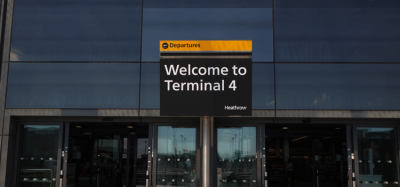The UK Border Agency
Posted: 30 May 2008 | Lin Homer, Chief Executive, UK Border Agency | No comments yet
Richard Piper speaks to Lin Homer, Chief Executive of the UK Border Agency, about what is being done to strengthen UK borders and how they are utilising the latest advances in technology.
Richard Piper speaks to Lin Homer, Chief Executive of the UK Border Agency, about what is being done to strengthen UK borders and how they are utilising the latest advances in technology.
Q: On April 3rd 2008 the shadow UK Border Agency was established. How does this differ from the Border and Immigration Agency?
The UK Border Agency brings together in one organisation, for the first time, the work of UKvisas, immigration and customs operational work at the border in a single body. The board of the UK Border Agency includes a wide range of expertise including HMRC Commissioners and a senior police officer.
It is a truly international organisation, with 25,000 staff based in the UK and around the globe ensuring individuals seeking to enter the UK face stringent checks and making it harder for foreign criminals to target the UK. Establishing a unified border force is one element of a wider package of measures to improve and strengthen our protection.
Q: What impact will the creation of the UK Border Agency and the new Border Force have for the aviation industry?
The UK Border Agency will improve the UK’s security through strong border controls protecting the country from illegal immigration, organised crime and terrorism, while welcoming and facilitating legitimate travellers and trade. It will protect our border with single immigration and customs checks, tackle smuggling, immigration crime and border tax fraud, and implement fast and fair decisions.
However strong border controls should not be at the expense of legitimate travellers. Businesses and government should do what they can to make sure that the disruption caused by intercepting those who represent a higher risk is minimised. Investment in new automated clearance technology is already speeding the passage of legitimate travellers through the controls.
Q: What powers will officers of the new agency have?
UK Border Agency officers will have tough customs, immigration and police like powers. We have already started a training programme to train at least 1000 staff in both customs and immigration functions by the end of the year.
Q: What is the role for the police in the new agency?
The new agency will work very closely with the police and other law enforcement agencies to ensure we protect and serve the public. The appointment of Roger Baker (Chief Constable Essex) to the UKBA board is a reflection of this. A new high level framework for UKBA and police co-operation at the border has been put in place which sets out a clear set of principles to strengthen the UK’s borders through closer working.
Q: When will the public see a visible difference at ports?
From the summer, five locations – Gatwick, Coquelles, Edinburgh Airport, Harwich and Teesport – will be operating as flagship sites with a range of joint working initiatives being introduced. This is the start of the phased roll-out of new operating models for border controls at ports of entry, which will bring together customs and immigration activities into a single, integrated process. One of the key elements of the work at flagship sites will be to put in place a primary checkpoint, at which officers will undertake both passport checks and some customs activity.
The travelling public and industry will also begin to see visible changes at the border over the summer period with the rollout of clear and more informative UK Border Agency signage. Frontline staff will be brought together through the roll out of a new uniform which will reflect the cultures of the previous organisations.
Q: How is the UK Border Agency engaging with the aviation industry?
The Aviation Industry is represented on our Industry Stakeholder Group and the Aviation sub group. We have been seeking the direct involvement of industry in the development of our future service and have taken their views into account.
Q: Queues at airports in particular were the subject of much attention last year. What steps are being taken to improve the passenger experience at our ports?
We seek and generally adhere to waiting time targets of 45 minutes for Non EEA and 25 minutes for EEA (European Economic Area). As we have introduced 100% swipe checking of all passports we have found some longer queuing but in many cases waiting times have continued to fall. For example in September 2007 at Heathrow Terminal 3 non-EEA 22% of passengers waited longer than 45 minutes; by March 2008 this was down to 2%.
We are committed to putting customer service at the forefront of our priorities as we develop a single border force. This work will be developed in collaboration with port operators and other interested groups. This activity includes the introduction, during the course of 2008, of Service Level Agreements with port operators. We are also working with carriers to improve passenger awareness of procedures at the border to help make smoother their passage through the border.
Q: What is the current position on automated Border controls?
Since our last interview, we have extended IRIS to Terminal 5. There are now over 195,000 people enrolled. Since January this year crossings facilitated by the system increased to 17,000 per week and there is a noticeable increase since T5 opened. The total number of crossings facilitated by IRIS since its introduction at Heathrow in 2006 is in excess of 1m.
We believe that automation and the further development of e-Borders is part of the key to balancing the priorities of the security of the UK and ensuring an effective passenger experience. We are currently in discussions with other Government organisations and the private sector about the next steps for automation. There are two schemes emerging:
- Enrolment Scheme – updating IRIS with a new scheme which will facilitate inter-operability between different schemes in different countries – and may offer a wider package of travel benefits to passengers;
- e-Passport Scheme – the use of automated gates which read the chips of EEA passports and perform a biometric verification check to ensure the person presenting the document is the legitimate holder of it.
Q: What happens to IRIS?
IRIS is our first use of these pioneering biometric technologies and, as well as being extremely successful in its own right, it has laid solid foundations for the development work we are now progressing. It will gradually be replaced by the new schemes. IRIS members will have the option of transferring to the new enrolment scheme, and they will be able to use the e-Passport Scheme if they hold the correct type of travel document.
Q: How will the e-Passport Scheme operate?
The e-Passport Scheme will use the biometric information contained within the chip of EEA passports issued since 2006. Chipped EEA passports currently contain a digital photograph of the rightful holders and it is proposed that the first release of e-Passport gates will use facial recognition technology. We intend to run a pilot from this summer.
Passengers with a chipped passport simply insert the document into a reader at an automated gate. The gate will undertake some checks and then compare the passenger’s face to the digital photograph recorded on the passport chip. If there is a match, the passenger will be allowed to enter the UK through the gates. If there is no match, then the passenger will be seen by a Border Officer.
In 2009, the EEA will begin recording finger scans on passport chips which will eventually enable us to operate similar gates using finger scans rather than digital images.
Q: Do these Schemes reduce the security of the Border?
No, these Schemes enhance security. By using biometrics, we are introducing more certainty to the identification of passengers. Both Schemes are connected to the databases that we normally use to check passports. In addition, the Schemes should allow our highly skilled Border Officers to spend more of their time on higher risk passengers who may cause harm to the UK.
Q: How has the e-borders Programme changed since Contract Award?
e-Borders is a very ambitious programme, aiming to be nothing less than one of the world’s most advanced border-control systems and one that will be a model for other countries. Since the contract for e-Borders was awarded to Trusted Borders in November 2007, the Authority Programme Team has been working in partnership with the consortium ensuring that the Service Provider is fully supported in delivery of the e-Borders solution. A site has now been chosen for the e-Borders Operations Centre (e-BOC), to be established by mid-2009 at the earliest.
Following on from the Glasgow and London bombings, a National Security Review was conducted. As an additional service to the contract, and under recent legislation, carriers will be required to provide Passenger Name Records (PNR), otherwise known as Other Passenger Information (OPI), to e-Borders. This additional service was always planned for in contract discussions.
The Semaphore pilot closed on 31 March 2008, and the maintenance of the system passed to Trusted Borders. Since then, additional work has been carried out on profiling techniques, analytics and data mining to find further ways of extracting Semaphore information of interest to the border agencies.
About Lin Homer
Lin Homer is Chief Executive of the UK Border Agency, an Executive Agency of the Home Office, responsible for securing the UK’s border and controlling migration for the benefit of the UK.
The UK Border Agency is a 25,000-strong organisation, with a presence in 135 countries world-wide. The Agency is focused on improving border controls and security and delivering a firm, fair immigration system, whilst allowing legitimate travel and trade to flourish for the benefit of the UK.
Lin joined the Immigration and Nationality Directorate as Director General in August 2005. In April 2008, immigration, customs work at the border and UKvisas were brought together to form the UK Border Agency under Lin’s control.
Lin had been Chief Executive of Birmingham City Council from 2002-2005 and prior to that Chief Executive of Suffolk County Council (1998-2002). Before joining Suffolk, Lin, a lawyer, was Deputy Chief Executive at Hertfordshire County Council. She was also a Non Executive Director at the Department for Education and Skills.
Join our free webinar: Transforming Airport Security – Innovation, Impact, and the Passenger Experience
The landscape of airport security is undergoing a profound transformation, driven by evolving threats, technology, and passenger expectations. This webinar focuses on how AtkinsRéalis has been transforming security processes at some of the world’s busiest airports with smarter, more adaptive solutions.
Date: 4 Nov | Time: 14:00 GMT
REGISTER NOW TO SECURE YOUR SPOT
Can’t attend live? No worries – register to receive the recording post-event.


















